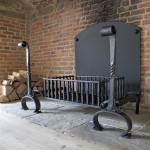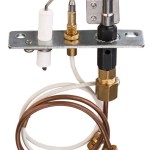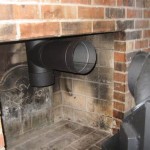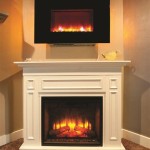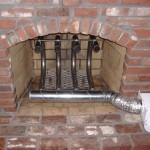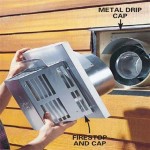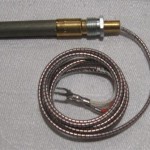Coal Burning Fireplace Inserts: A Comprehensive Overview
Coal burning fireplace inserts represent a robust and efficient heating solution for homeowners seeking an alternative to traditional wood-burning fireplaces. These inserts are designed to fit directly into existing fireplace openings, transforming them into powerful and controllable heat sources. While coal combustion presents its own set of considerations, the energy density of coal offers a compelling advantage in terms of heating capacity and burn time compared to wood.
This article will explore the functionality, benefits, considerations, and installation nuances associated with coal burning fireplace inserts. It aims to provide a thorough understanding of these appliances, enabling informed decisions regarding their suitability for specific heating needs and environments.
Functionality and Design of Coal Burning Fireplace Inserts
Coal burning fireplace inserts operate on the principle of controlled combustion. The design incorporates a firebox specifically engineered to accommodate coal. This firebox is typically constructed from heavy-duty materials like cast iron or steel, capable of withstanding the high temperatures generated by burning coal. Air intake is regulated to optimize combustion efficiency and minimize emissions. A key component is the grate, which allows ash to fall through while supporting the burning coal. Many models also incorporate a shaker grate mechanism, facilitating the removal of ash without interrupting the burning process.
Beyond the firebox, a critical aspect of the design is the venting system. Coal combustion produces carbon monoxide and other potentially harmful gases, demanding a properly installed and maintained venting system to safely exhaust these byproducts outside the home. This venting system often utilizes a stainless-steel liner that runs up the existing chimney, preventing corrosion from acidic byproducts of combustion.
Furthermore, modern coal burning fireplace inserts incorporate features like thermostatic controls and blowers to enhance heating efficiency and distribution. Thermostatic controls allow for precise temperature regulation, while blowers circulate heated air into the room, maximizing heat output and minimizing heat loss up the chimney.
The aesthetic design of coal burning fireplace inserts varies widely, ranging from classic and traditional to contemporary and minimalist styles. This allows homeowners to select an insert that complements their existing décor while providing a functional heating solution.
Advantages of Coal Burning Fireplace Inserts
The appeal of coal burning fireplace inserts stems from several distinct advantages, primarily related to the heating characteristics of coal itself. Coal boasts a significantly higher energy density compared to wood. This means that a smaller volume of coal can produce a greater amount of heat, leading to extended burn times and reduced refueling frequency. In practical terms, a single load of coal can often provide consistent heat for 12-24 hours, making it a convenient option for overnight heating or maintaining consistent temperatures during extended periods.
Another advantage lies in the consistent and predictable heat output of coal. Unlike wood, which can vary in moisture content and density, coal provides a more uniform and predictable heat source. This allows for more precise temperature control and a more consistent heating experience. This characteristic is particularly beneficial for those seeking a reliable and hands-off heating solution.
Furthermore, coal can be a cost-effective heating option in certain regions, particularly those with readily available and affordable coal supplies. While the initial investment in a coal burning fireplace insert may be higher than some other heating options, the lower fuel costs can often offset this initial expense over time, leading to long-term savings. However, it is extremely important to consider the local cost of coal and compare it with the cost of wood, natural gas, or propane before making a decision based on potential cost savings.
The durability of coal-burning inserts is also a significant advantage. Typically constructed from robust materials, these inserts are designed to withstand the high temperatures and demanding conditions associated with coal combustion. With proper maintenance, a well-built coal burning fireplace insert can provide reliable service for many years.
Considerations and Challenges Associated with Coal Burning Inserts
Despite their advantages, coal burning fireplace inserts present several considerations and challenges that must be carefully evaluated before making a purchase. The most significant concern is related to emissions. Coal combustion produces pollutants, including sulfur dioxide, particulate matter, and carbon monoxide. While modern coal burning inserts are designed to minimize emissions, it is essential to ensure that the selected model meets local emission standards and that the appliance is operated and maintained properly to minimize environmental impact.
Proper venting is absolutely crucial for safe operation. As mentioned previously, coal combustion generates carbon monoxide, a colorless and odorless gas that can be deadly. A properly installed and maintained venting system is essential to safely exhaust these gases outside the home. Regular inspection and cleaning of the chimney and venting system are critical to prevent blockages and ensure proper airflow. Consult with a qualified professional to ensure the venting system is appropriate for coal burning and meets all applicable safety codes.
Ash disposal is another consideration. Coal produces a significant amount of ash, which must be handled and disposed of properly. Hot ash can pose a fire hazard, so it is crucial to use a metal ash container and to allow the ash to cool completely before disposal. Local regulations may also dictate how ash should be disposed of, so it is important to be aware of and comply with these regulations.
The relatively higher mess and physical effort required compared to gas or pellet stoves is another factor. Coal is a naturally dirty fuel, and handling it can be messy. Stoking the fire and removing ash require more physical effort compared to more automated heating systems. This can be a significant consideration for individuals with mobility limitations or those seeking a more convenient heating option.
Availability of coal must also be considered. The cost and accessibility of coal vary significantly depending on geographic location. In some areas, coal is readily available and relatively inexpensive, while in others it may be difficult to obtain or prohibitively expensive. Before investing in a coal burning fireplace insert, it is essential to assess the long-term availability and cost of coal in the local area. Furthermore, the storage of coal requires dedicated space and proper protection from the elements to prevent degradation and maintain its heating value.
Homeowner's insurance is another crucial aspect to investigate. Some insurance companies may have specific requirements or restrictions related to coal burning appliances. It is essential to consult with the insurance provider to ensure that the coal burning fireplace insert is covered under the homeowner's policy and that all necessary safety precautions are in place.
Installation and Maintenance of Coal Burning Fireplace Inserts
Proper installation is paramount for the safe and efficient operation of a coal burning fireplace insert. Installation should always be performed by a qualified professional with experience in installing coal burning appliances. This includes ensuring that the insert is properly sized for the fireplace opening, that the venting system is compatible with coal combustion, and that all safety codes and regulations are followed.
The installation process typically involves several steps, including preparing the fireplace opening, installing the venting system, connecting the insert to the venting system, and testing the appliance to ensure proper operation. A key element is often the installation of a stainless steel chimney liner, which is crucial for protecting the existing chimney from the corrosive byproducts of coal combustion. It is also important to ensure that the hearth extension is adequate to protect the floor from sparks and embers. The professional installer should conduct a thorough inspection of the existing chimney to identify any potential problems that could compromise safety or efficiency.
Regular maintenance is essential for maintaining the performance and safety of a coal burning fireplace insert. This includes regular cleaning of the chimney and venting system to prevent creosote buildup and ensure proper airflow. Inspections should be performed annually by a qualified professional to identify any potential problems and ensure that the appliance is operating safely and efficiently. It is also important to inspect and maintain the grate, shaker mechanism, and other moving parts to ensure proper function.
Ash removal should be performed regularly, using a metal ash container and allowing the ash to cool completely before disposal. The firebox should also be cleaned periodically to remove accumulated ash and soot. Furthermore, it is important to follow the manufacturer's instructions for operating and maintaining the appliance, including recommended fuel types and burning practices.
By adhering to proper installation guidelines and implementing a regular maintenance schedule, homeowners can ensure the safe, efficient, and long-lasting performance of their coal burning fireplace insert.

Belmont Small Gas Insert

Fireplaces Inserts Hillside Acres Stoves Coal Wood Propane

Fireplaces Inserts Hillside Acres Stoves Coal Wood Propane

Hitzer 983 Fireplace Insert

Keystoker Hf 70 90 Coal Insert By Obadiah S Woodstoves

Fireplace Insert For Hitzer

Elite Fireplace Insert Legacy Stoves Coal Stove

Fireplace Insert

Hitzer 503 Ez Flo Hopper Fed Fireplace Insert The Coal

Fireplaces Inserts Hillside Acres Stoves Coal Wood Propane
Related Posts

